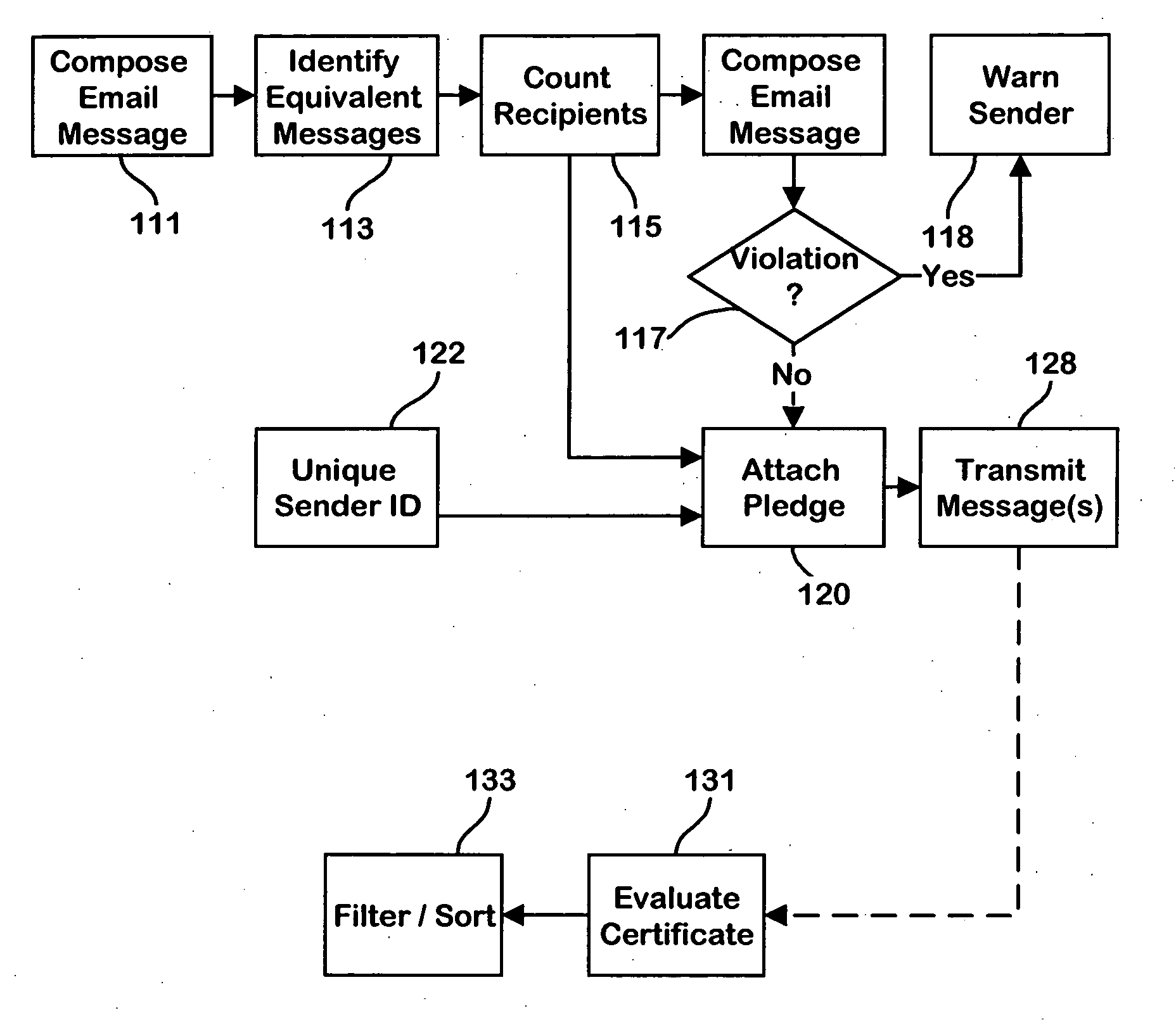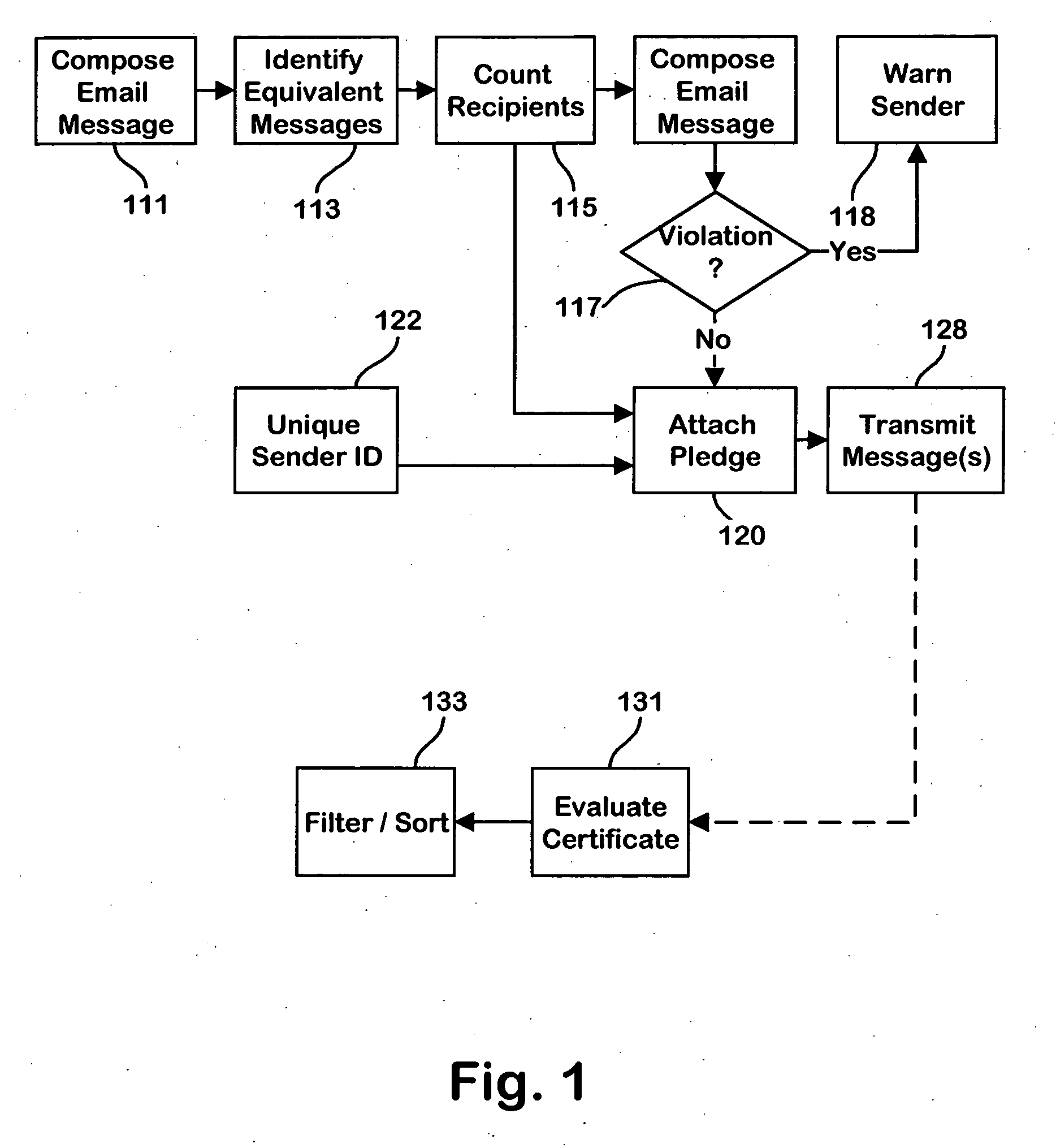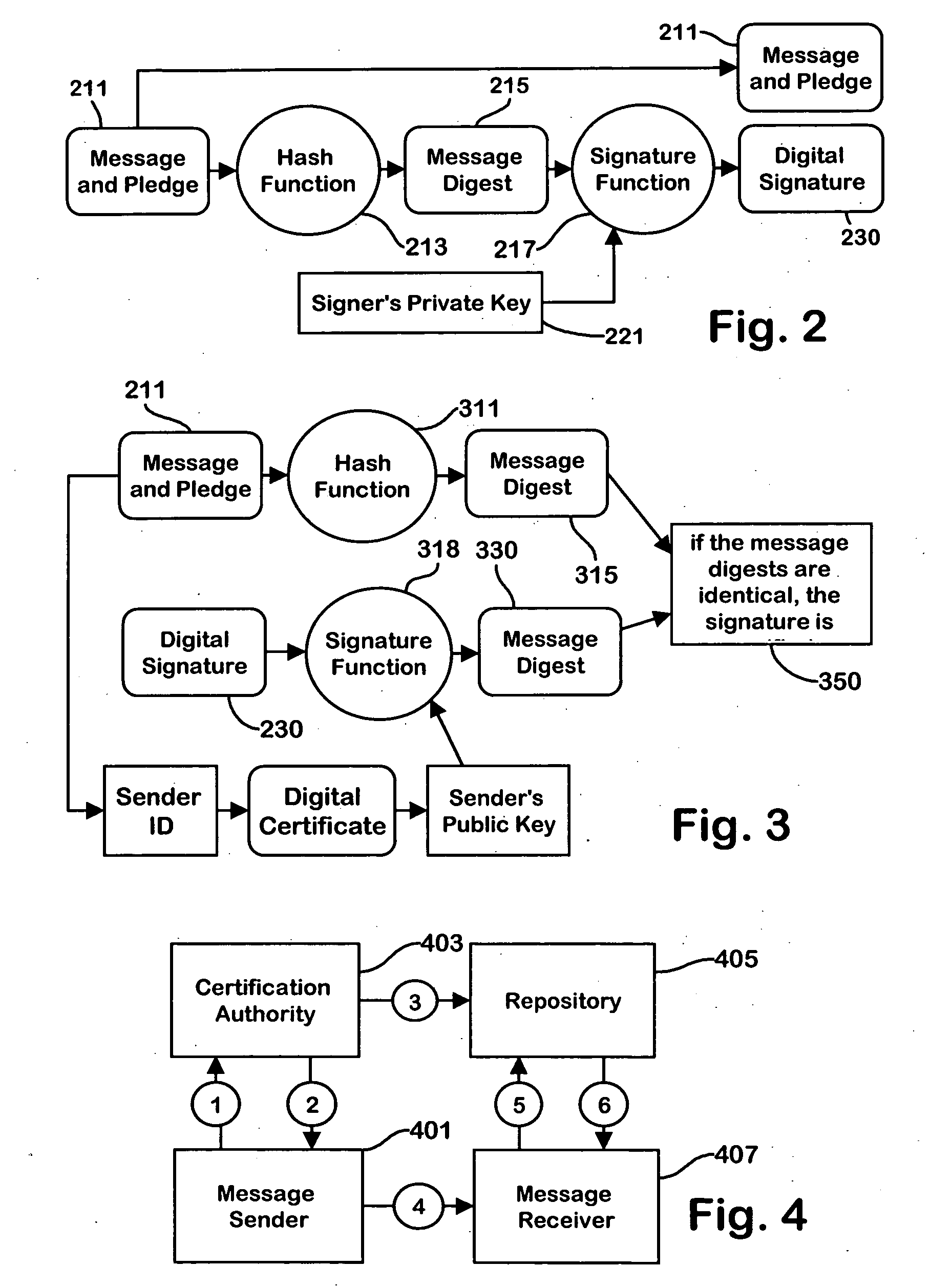Methods and apparatus for controlling the transmission and receipt of email messages
a technology for email and transmission, applied in the field of electronic communication systems, can solve the problems of civil liability of senders, criminal liability of perpetrators, and circumventing or misuse of digital devices, and achieve the effect of reducing the burden of spam
- Summary
- Abstract
- Description
- Claims
- Application Information
AI Technical Summary
Benefits of technology
Problems solved by technology
Method used
Image
Examples
Embodiment Construction
[0015]Internet email operates in a manner specified by a group of RFC (Request for Comment) documents published by the IETF (Internet Engineering Task Force). These standards documents include RFC822, published in 1982, which describes the current standard for Internet email messages and specifies how email messages need to be formatted when transmitted from host to host. Chapter 5 of RFC 1123 published in 1990 contains additional specific information about email standards. As specified in RFC822, the content of an email message is limited to US-ASCII characters. In order to transmit more complex data, including an expanded character set used by other languages as will as binary data such as computer programs and multimedia data files, a series of RFCs was published in 1996 which defined the MIME protocol: RFC2045 through RFC2049. These and other RFC documents are freely available on the Internet from many sources, including the IETF web site at http: / / www.ietf.org / rfc.html. The ema...
PUM
 Login to View More
Login to View More Abstract
Description
Claims
Application Information
 Login to View More
Login to View More - R&D
- Intellectual Property
- Life Sciences
- Materials
- Tech Scout
- Unparalleled Data Quality
- Higher Quality Content
- 60% Fewer Hallucinations
Browse by: Latest US Patents, China's latest patents, Technical Efficacy Thesaurus, Application Domain, Technology Topic, Popular Technical Reports.
© 2025 PatSnap. All rights reserved.Legal|Privacy policy|Modern Slavery Act Transparency Statement|Sitemap|About US| Contact US: help@patsnap.com



